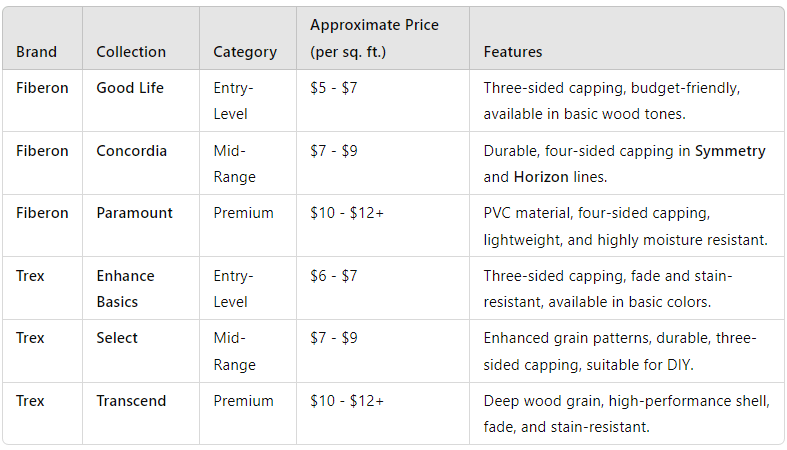When it comes to composite decking, Fiberon and Trex are two of the most recognized brands. Each offers unique features designed for durability, sustainability, and aesthetic appeal, which makes them top choices for homeowners.
This article explores the similarities and differences between Fiberon and Trex in order to provide insight into which might be the better option for your project.
What Is Composite Decking?
Composite decking is a material made from a blend of recycled wood fibers and plastics that have been designed to mimic the appearance of wood with significantly improved durability. It provides several advantages over traditional wood decking:
- Durability: Resistant to warping, splintering, and rotting
- Low Maintenance: Requires less upkeep compared to traditional wood
- Environmentally-Friendly: Utilizes recycled materials to reduce the need for new wood and plastic
Trex vs. Fiberon: Key Differences
What sets Trex and Fiberon apart from less expensive composite decking brands are their higher-quality materials and superior manufacturing processes:
Multi-layered Protective Shells
Trex and Fiberon both use multi-layered shells that enhance resistance to stains, scratches, and fading. However, only Fiberon’s Paramount and Promenade collections are capped on all four sides, while Trex caps its boards on three sides across its entire range
Higher Recycled Content
- Trex: Contains up to 95% recycled content
. - Fiberon: Utilizes up to 94% recycled content
.
Why Cheaper Composite Decking Falls Short
Lower-end composite decking options often lack the durability and longevity found in Trex and Fiberon products. Here’s what homeowners can expect with high-end composite decking:
- Long-lasting Beauty: Retains its appearance and structural integrity for decades
- Strong Warranties: Warranties covering 25-50 years are common for both brands
- Customization: Offers a wider range of color and texture options compared to budget-friendly brands, which have limited choices
With the basics of composite decking explained, it’s time to examine the durability and resistance of Trex and Fiberon.
Durability and Resistance to Elements

Both Fiberon and Trex excel in durability. Composite materials are crafted from a mix of wood fibers and recycled plastics to ensure resistance to rot, mold, UV exposure, and other forms of damage caused by moisture. Trex’s Transcend line and Fiberon’s Paramount and Promenade collections are particularly noted for their high fade resistance, even in areas with prolonged sun exposure.
In terms of scratch and stain resistance, both brands perform exceptionally well, which makes them suitable for high-traffic areas. Both brands guarantee a lifespan of 25-30 years with minimal maintenance for long-term durability.
Now that durability and protection have been covered, let’s explore the design flexibility and aesthetic choices offered by Fiberon and Trex.
Design Flexibility and Aesthetic Choices

A deck’s appearance is crucial, and both brands offer a wide range of design options to suit various tastes. Fiberon provides 24 colors across its collections, including the popular Concordia, Sanctuary, and Good Life series, that feature rich wood-like hues that cater to both modern and traditional aesthetics
Trex offers 23 color choices, with collections like Transcend, Select, and Enhance, that focus more on classic earth tones such as Pebble Grey and Winchester Grey
While both brands offer realistic wood grain patterns, Trex has garnered a reputation for deeper textures, especially in its Transcend line, which mimics the feel of natural wood more closely.
With design options reviewed, it’s important to also consider how Fiberon and Trex compare in terms of cost and long-term value.
Cost and Long-Term Value
Pricing for composite decking can vary, but Fiberon generally offers a more cost-effective solution than Trex. Entry-level Fiberon products can start as low as $5 per square foot, whereas Trex products begin around $6 per square foot and can increase to $12 depending on the line
While Trex tends to be more expensive, it offers a wider range of accessories, including outdoor furniture, pergolas, and even kitchen components, which can add to the overall cost, but will provide a cohesive look for your outdoor space
Alt text: A chart comparing the cost of Fiberon vs Trex.
Additional Notes:
- Entry-Level Products like Fiberon Good Life and Trex Enhance Basics are ideal for budget-conscious projects by offering lower costs but still providing the benefits of composite decking.
- Mid-Range Products such as Fiberon Concordia and Trex Select offer a balance between durability, aesthetic options, and cost, which makes them popular choices for homeowners looking for enhanced performance.
- Premium Products such as Fiberon Paramount and Trex Transcend are designed for long-term use, especially in high-moisture environments. These tend to be priced higher due to advanced material compositions (like PVC for Fiberon Paramount) and deeper grain textures (as seen in Trex Transcend).
After comparing costs, it’s essential to assess how Fiberon and Trex perform in terms of environmental sustainability.
Environmental Sustainability
Both brands are champions of sustainability, because they use a high percentage of recycled materials in their products:
- Trex: Uses 95% recycled materials and goes beyond decking with its NexTrek recycling program that collects plastic waste from retailers
- Fiberon: Follows closely behind with 94% recycled content, operating its own in-house recycling plant that diverts millions of pounds of plastic from landfills.
Having explored the sustainability efforts of both brands, it’s now time to look at their warranty options and transferability policies.
Warranty and Transferability
Both Fiberon and Trex stand behind their products with robust warranties:
- Trex offers a 25-50 year warranty, depending on the product line, and allows a one-time warranty transfer, which makes it a strong selling point for resale
. - Fiberon offers up to a 50-year warranty for premium products, but the warranty is not transferable
.
After reviewing the warranties, it’s equally important to understand the maintenance needs and ease of installation for both Fiberon and Trex decking.
Maintenance and Ease of Installation
Maintenance is minimal for both Fiberon and Trex, with neither requiring the regular staining or sealing that wood decks need. Cleaning both types of composite decking is straightforward, and requires only soap and water to maintain their appearance
Installation is made easy with hidden fastening systems offered by both brands. These systems not only improve the aesthetics of the deck by hiding screws, they also make the installation process quicker and simpler
Ready to Transform Your Outdoor Space?

Whether you prefer the affordability of Fiberon or the premium accessories of Trex, Lumber Plus has you covered. With a comprehensive selection of both brands, we are here to help you find the right decking materials to bring your outdoor project to life!
Contact us today for more information!







